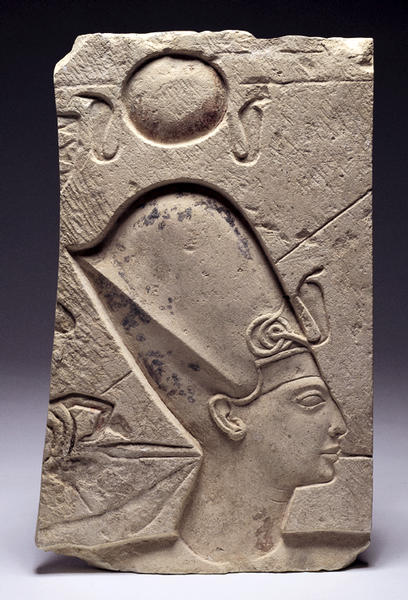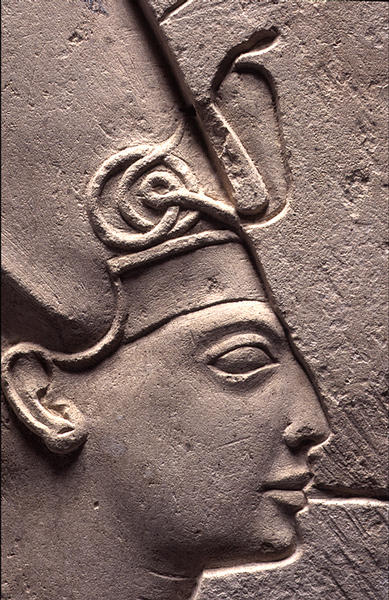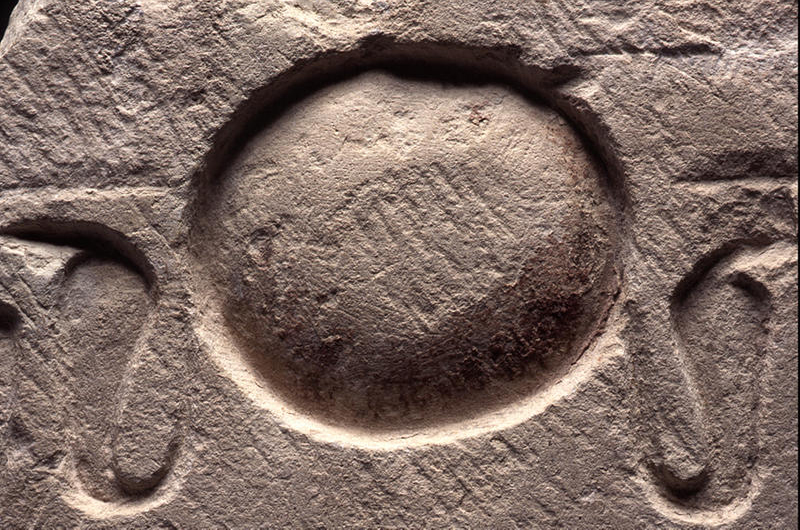Relief with Profile of Ramesses II
- Egypt
- Egypt, Dynasty 19
- Reign of Ramesses II (1279 - 1213 B.C.)
- Limestone with traces of paint
- H-75.6 D-8 W-46.3
Catalogue Entry
Ramesses II, also known as Ramesses the Great, ruled for sixty-six years. Although his reign was mostly peaceful, in the early part of it he distinguished himself in battle against the Hittites, Egypt's principal rival in the ancient Near East. The highlight of his military career occurred at the battle of Qadesh in Syria, which took place in his fifth regnal year. Ramesses was so proud of his bravery at Qadesh and so solicitous of his military reputation that he had key scenes from the battle carved on temple walls from Egypt to Nubia, accompanied by a narrative and a poem extolling the king's deeds.
More buildings and statues of Ramesses II remain today than of any other Egyptian ruler. This is partly because he had ample time and means for such enterprises, and partly because he did not hesitate to inscribe his name on standing monuments of his predecessors. Of the originality of this work, however, there is no question. The king's own features are here for all to see, boldly and dramatically carved in sunk relief (a specialty of Ramesses's artisans): aquiline nose, pierced ear, neck creases and all, with no trace of reworking. The king wears the helmet-shaped Blue Crown (so called because it was usually painted blue), adorned with the uraeus, or royal cobra, on his brow and streamers flying in back. Although often called a war crown, it appears just as often in scenes of a purely ceremonial nature. For example, the most beautiful of all images of Ramesses II (the statue in Turin, Italy) shows him seated on his throne, dressed in pleated white linen, wearing exactly this crown.1 Here, however, the warlike context is unmistakable, for the king has drawn his bow and is ready to fire. So as not to obscure the royal visage, the bowstring and arrow pass behind his head. The complete relief probably showed the king standing alone in his chariot, the reins of his horses tied about his waist, just as he appears in battle scenes at Karnak, Luxor Temple, the Ramesseum, and Abu Simbel.2 Above his crown is a sun disk with pendant uraei, and just to the left of it one can just make out the tips of the feathers of a falcon's wing, powerful protective symbols that safeguarded the king in battle and made him invincible.
Traces of paint remain in several areas and include red ocher and Egyptian blue.
LMB
1. Turin, Museo egizio Cat. 1380: often illustrated, e.g., in Donadoni Roveri 1989, p. 158, fig. 244.
2. Wreszinski 1935, pls. 58a (Karnak), 81, 83-84, 86 (Luxor Temple), 96-97, 99-101, 103 (Ramesseum), 169-70, 174 (Abu Simbel).


